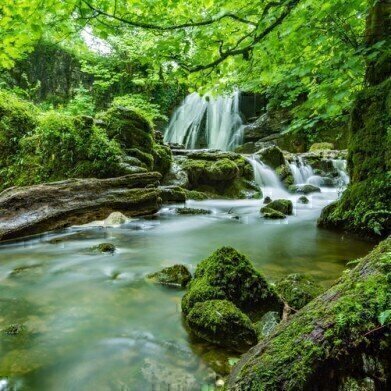Columns (LC)
How Do Jungles Affect Global Warming? - Chromatography Investigates
Mar 21 2021
Most people know that anthropogenically produced carbon dioxide is the main driver of climate change and global warming. Record droughts, epic floods and changing habitats are all the result of changing climate. Carbon dioxide is the gas most often linked with climate change, as increased concentrations of carbon dioxide in the atmosphere since the industrial revolution are one of the prime drivers behind global changes in climate.
But carbon dioxide is not the only gas that causes global warming. Methane is the next most relevant greenhouse gas in terms of its effect on radiative forcing. The atmospheric concentration of methane depends on many factors. In recent years, the atmospheric concentration of methane has been increasing and humans are not to blame for it all it seems. Researchers from RUDN University have investigated the role of tropical rainforests in the production of methane. And in a paper - Soil Is a Net Source of Methane in Tropical African Forests – published in the journal forests they describe how some jungles not only consume methane but also emit it, and chromatography was there to measure the gases.
Forests of Ghana
The share of methane in the atmosphere is quite small at less than 1%. But its contribution to the greenhouse effect is 20-30 times than the same amount of carbon dioxide. The tropics are thought to be one of the main sources of methane and soil scientists have investigated the release of methane from swampy areas. It is thought that methane producing organisms live in these habitats and thrive in the anaerobic conditions.
It was thought that other areas of tropical forest stored methane rather than emitted it. A team of researchers from The Peoples' Friendship University of Russia (RUND University) travelled to the equatorial rainforests of Ancasa Conservation Area in Ghana to study the role of tropical rainforest ecosystems in the circulation of methane between the soil and the atmosphere.
Chromatography measures the methane
In a press release, Riccardo Valentini the lead author said: We studied two land plots, on top of a hill and at its foot. The plots had opposite conditions and completely different methane production and absorption processes. Our analysis confirmed that equatorial forest soils remain a continuous source of methane all year round. The team spent two years taking samples to monitor the methane flow between the soil and the atmosphere.
The samples were taken in sealed bags and analysed using gas chromatography. Advances in chromatography are discussed in the article, The Only Thing Faster Than Ultra-Fast Is Instantaneous. The team concluded that the net annual methane budget for the area was as a source of methane. If such areas are overlooked, we might underestimate the total methane source strength of forested areas
Digital Edition
Chromatography Today - Buyers' Guide 2022
October 2023
In This Edition Modern & Practical Applications - Accelerating ADC Development with Mass Spectrometry - Implementing High-Resolution Ion Mobility into Peptide Mapping Workflows Chromatogr...
View all digital editions
Events
ACS National Meeting - Fall 2024
Aug 18 2024 Denver, CO, USA
Sep 04 2024 Chiba, Tokyo, Japan
Sep 04 2024 University of Warwick, Coventry, UK
Sep 10 2024 Rockville, MD, USA
Plastics Recycling World Expo Europe
Sep 11 2024 Brussels, Belgium














